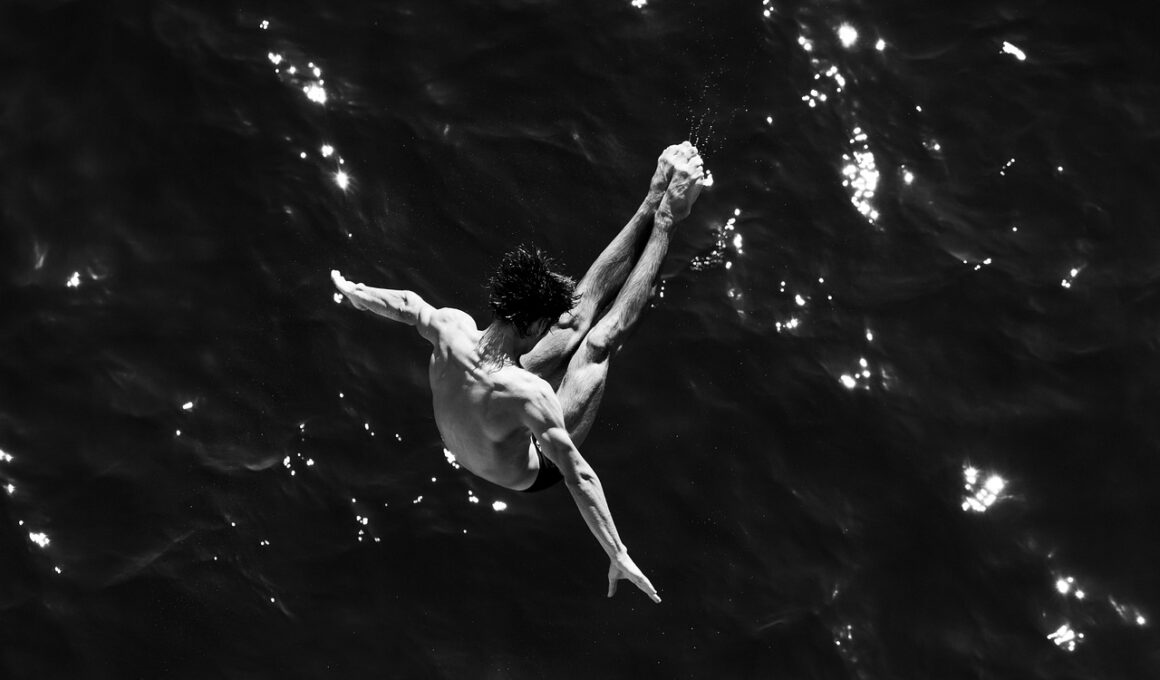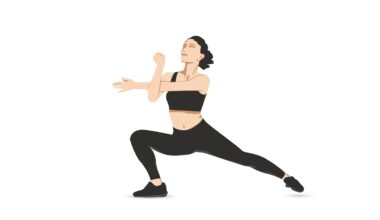Mental Visualization: A Key to Unlocking Your Athletic Potential
Mental visualization is a powerful tool for athletes looking to reach new heights in performance. Bycreating vivid mental images of successful executions of their sport, athletes enhance their focus and improve their overall capabilities. This technique involves imagining oneself performing specific skills, competing, and achieving desired goals. Visualization stimulates the brain in a manner similar to real-life experience, activating neural pathways and body responses. Regular practice of this technique leads to improved motor skills and heightened confidence levels. Research shows that even the best athletes use visualization to prepare and succeed in their respective sports. It serves as a key technique for reinforcing learning and muscle memory, enabling athletes to replicate their mental images in actual performances. Incorporating this practice into daily training regimens is essential for all athletes aiming to unlock their potential. Not only does mental visualization help in skill acquisition, but it also fosters resilience, motivation, and mental clarity. By dedicating time to this technique, athletes can optimize their mental preparedness and elevate their overall athletic experience, leading to a higher success rate in competitions.
A crucial aspect of mastering mental visualization is understanding the power of detailed imagery. Visualizing success requires more than just a simple image; it involves crafting elaborate scenes that engage all senses. By incorporating sight, sound, touch, and even emotions, athletes can create a holistic picture of their success. Athletes should envision themselves in their sports environment, feeling the texture of their equipment and hearing the crowd’s cheers. This immersive visualization approach aids in conditioning the mind and body to respond favorably under pressure. Practicing these exercises consistently empowers athletes to visualize not just victory but also the journey to success, including the challenges faced along the way. By establishing a perfect mental blueprint, the brain learns to anticipate and prepare for real-life execution. Ultimately, successful athletes rely on their ability to visualize, thus laying the groundwork for their physical performance. Implementing such dedicated practice means one actively prepares for every potential situation athletes might encounter during competitions. This approach builds confidence and transforms fears into motivations, fostering an unbeatable competitive edge and resilience in the face of adversity.
Building a Strong Visualization Routine
Creating an effective visualization routine is essential for athletes wishing to integrate this technique meaningfully into their training routines. To establish a solid foundation, athletes must find dedicated time blocks for practice. Consistency is critical; setting aside moments before training sessions or competitions is beneficial. Silent environments free of distractions improve focus and promote deeper mental imagery. Athletes should sit or lie down comfortably, close their eyes, and begin by taking a few deep breaths to calm the mind. Once centered, they can start building their visual scenes, starting from their aspirations and guiding them toward their desired accomplishments. Initially, focusing on small, achievable goals and gradually expanding to more significant visions can enhance confidence. Repeatedly revisiting these visualizations strengthens neural connections that facilitate desired muscle memory. Athletes are encouraged to embrace positive affirmations during this process, as they reinforce belief and enhance self-efficacy. Keeping a journal for recording specific goals and the progress made can further solidify commitments to the visualization practice. By building routines around visualization, athletes equip themselves with mental tools that enhance physical execution, ultimately leading to improved athletic performance.
The effectiveness of visualization techniques can be further enhanced through integration with other mental skills training. Techniques such as mindfulness and meditation can significantly complement visualization practices, providing athletes with emotional regulation tools. Mindfulness enhances body awareness and enables athletes to observe their thoughts and feelings without judgment, directly impacting their visualization efficacy. Incorporating breathwork and grounding exercises allows for a more profound state of relaxation necessary for effective visualization. Allowing the mind to freely express and explore various scenarios helps reinforce positive outcomes while preparing for challenges. With this holistic approach, athletes ensure a more mature and rounded mental training regimen. Visualization alone can yield tremendous results; however, integrating it with mindfulness evolves the process into something more powerful. This synergy enables athletes to remain present during training, providing clarity and focus in both visualizations and actual performances. The goal should be to create a mental environment that feels as safe and supportive as possible. Consequently, framing visualization within a broader context of mental skills equips athletes with diverse tools for enhancing their performances, ultimately leading to improved outcomes on the field or court.
Common Challenges When Visualizing
Many athletes encounter common challenges while practicing mental visualization, impacting their overall effectiveness. One major hurdle is the struggle to concentrate or maintain a clear image. Distractions lurking in an athlete’s environment or wandering thoughts can derail the visualization process. Thus, developing focus becomes paramount. Athletes may also face skepticism regarding the effectiveness of visualization. Understanding that visualization is a tool for the mind rather than mere imagination can foster belief in its benefits. Another challenge can involve unrealistic expectations; achieving immediate results is unlikely. Patience and practice are needed for self-belief to truly grow. Athletes should remind themselves that visualization is a skill that improves over time. Additionally, it’s worth noting that an athlete’s emotional state can hinder the process. Anxiety and stress may obscure clear mental images, making relaxed sessions crucial. By recognizing these common issues, athletes can develop tailored strategies to overcome obstacles. Addressing challenges through techniques like mindfulness, journaling, and increased practice frequency ensures they can better achieve their visualization goals. The key is to approach visualization with an open mind and a willingness to experiment until finding a personally effective routine emerges.
The role of feedback in enhancing visualization cannot be overstated; both external and internal feedback mechanisms contribute to progress. Athletes can harness this feedback from coaches, trainers, and peers, as their insights provide a different perspective on one’s performance. Additionally, strengthening visualization efforts through self-reflection deepens one’s understanding of personal hurdles and successes. Keeping a record of visualizations and actual outcomes can help athletes relate the connection between the two. This continuous learning process ensures that adjustments are made for both visualization practice and athletic performance. For instance, if certain scenarios in visualization do not translate well into competition, athletes can refine their techniques and mental imagery. Similarly, recognizing what works and should be replicated fosters confidence. Finding confidence-boosting moments and integrating them into future practice can create a cycle of positive reinforcement. Therefore, athletes must remain open to feedback and self-analytical practices to refine visualizations continuously. When visualization becomes a two-way street of reflection and adjustment, it evolves into a profound tool for enthusiastic athletes aiming for excellent results across their performances.
Conclusion: Embracing Mental Visualization
In conclusion, mental visualization is a key component in unlocking an athlete’s full potential and enhancing performance. As athletes adopt visualization techniques intentionally, they embark on a transformative journey towards their goals. By wholeheartedly committing to a structured visualization routine, incorporating various mental skills, and addressing challenges, athletes can empower themselves strategically. The rewards of consistent practice reach far beyond personal success; they cultivate resilience, discipline, and an unwavering winning mindset. Furthermore, harnessing the power of visualization enhances focus during training and competitions, unlocking pathways to unattained athletic success. The synergistic relationship between visualization and performance underscores the importance of mental readiness in every aspect of competition. Athletes willing to embrace these techniques will likely notice profound differences in their psychological state, affecting physical execution positively. Moreover, results from the visualization are tangible, as they translate into improvements on the playing field. In today’s competitive landscape, falling short of maximizing the mind’s potential means missing opportunities. Therefore, mental visualization is not just an exercise; it is a fundamental practice every committed athlete should incorporate into their preparation and training strategies for optimal success.
Ultimately, incorporating mental visualization represents a powerful advantage in achieving athletic excellence, reinforcing the mind’s influence on performance. Recognizing its value can empower athletes to unlock their potential, motivating them to master their sport confidently. By investing time in their mental training processes, athletes set themselves on a course towards unparalleled success in their athletic endeavors.


